Do people look forward to reading your newest blog post? What about commenting on your Instagram photos? Climbing to the top of your loyalty program?
For many brands, it’s a constant struggle to keep their audience engaged and interested – let alone build an attentive audience in the first place.
If you want fiercely loyal customers who just can’t get enough of you, it’ll take some work.
It’s not enough to have an awesome product or service. You’ll need to go a step further by creating an emotional connection with customers.
To do this, you’ll need to show them that you really understand them and their interests, needs, and opinions. And you’ll need to deliver on that understanding by giving them meaningful, helpful, and interesting experiences whenever they interact with your brand.
In this article, we’ll discuss what customer engagement is, show some examples of brands that are nailing it, and offer some tips so you can nail it too.
Here we go.
Post Contents



What Is Customer Engagement?
If you Google “what is customer engagement,” you’ll find loads of different definitions and interpretations. Here’s ours:
Customer engagement is the level of interest people have to voluntarily interact with your brand. It goes beyond just buying your products or services – it’s an emotional connection.
→ Click Here to Launch Your Online Business with Shopify
The reason that this concept gets tricky is because it’s tough to quantify and measure someone else’s emotions. Wouldn’t life be so much easier if we could?
So when we look at customer engagement as marketers, we measure it with more tangible metrics based on their actions.
Your brand is showing signs of strong customer engagement if your prospects and customers are doing things like:
- “Liking” and commenting on your social media posts
- Entering and participating in the campaigns, promotions, contests, and events you’re running
- Joining and earning the benefits of your customer rewards or loyalty program
- Leaving positive reviews about your products and services on your site, social media platforms, and third party review sites
- Recommending your products or services to their peers
- Reading, downloading, and interacting with your blogs, videos, ebooks, and other content
It’s also a good sign when customers are consistently coming back to keep doing business with you.
But remember: just because they’re a returning customer doesn’t necessarily mean that they’re engaged with your brand on an emotional level.
Without this connection, there’s a much higher chance that they’ll jump ship the minute something goes wrong.
Let’s look at a few examples of brands that have mastered digital customer engagement.
Good Examples of Customer Engagement
Cadbury: Personalized Content
You won’t engage customers if your content is boring. Rather than constantly talking about your product or company – which is a surefire way to bore the masses – try to infuse some personalization into your content.
A great example of this is the chocolate brand Cadbury. After the success of Facebook’s personalized video, the company decided to create its own interactive content. But instead of giving people a look over their previous year with the brand, it spoke to their personal tastes in chocolate.
Part of the campaign involved people clicking the brand’s Facebook page. Once customers agreed to connect with Cadbury on the social platform, the company sent them a personalized video revealing their best match in Dairy Milk Chocolate items.

The campaign generated a 65 percent click through rate and a 33.6 percent conversion rate.
Marriott: Experiential Rewards
Loyalty programs have been around for a while – and this is partly because they’re good at generating customer engagement.
In today’s world, engaging people through this tactic might require experimenting with new mediums. For example, millennials are more likely to join a loyalty program that offers unique rewards instead of the usual discounts.
That’s why companies like Marriott are focusing on rewards that deliver experiences over discounts.
Marriott customers can bid and redeem their loyalty points for VIP access and tickets to world-class events in culture, arts, entertainment, and sports.
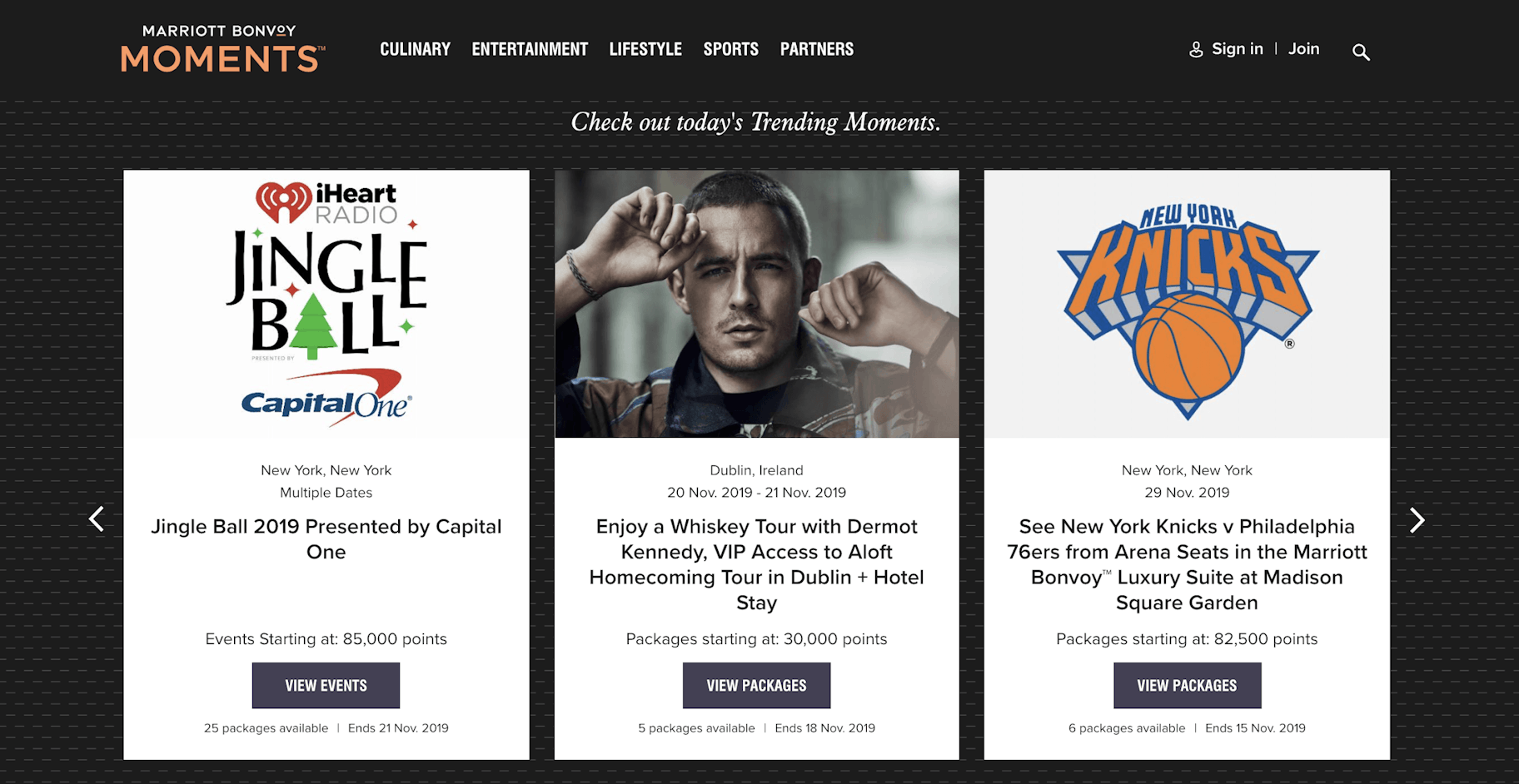
Marriott also has a secret, invite-only program called Cobalt.
Cobalt members are considered top-priority guests who get a personal invite from Marriott’s CEO and president himself. Perks include suite upgrades, welcome amenities, and invites to “ritual moments” at St. Regis chains.
Hertz: Social Media Customer Service
Social media is a prime opportunity to pick the brains of your target customers.
Because it takes no more than a few minutes to answer questions on social networks, this is an easy way to generate engagement. Instant responses on Twitter, Facebook, and other sites are more warmly received than email replies.
As leading car rental company Hertz found out, social customer service can help spur more engagement. People are more receptive to the brand’s efforts to answer and engage with them instantly, rather than being directed elsewhere without a satisfactory response.
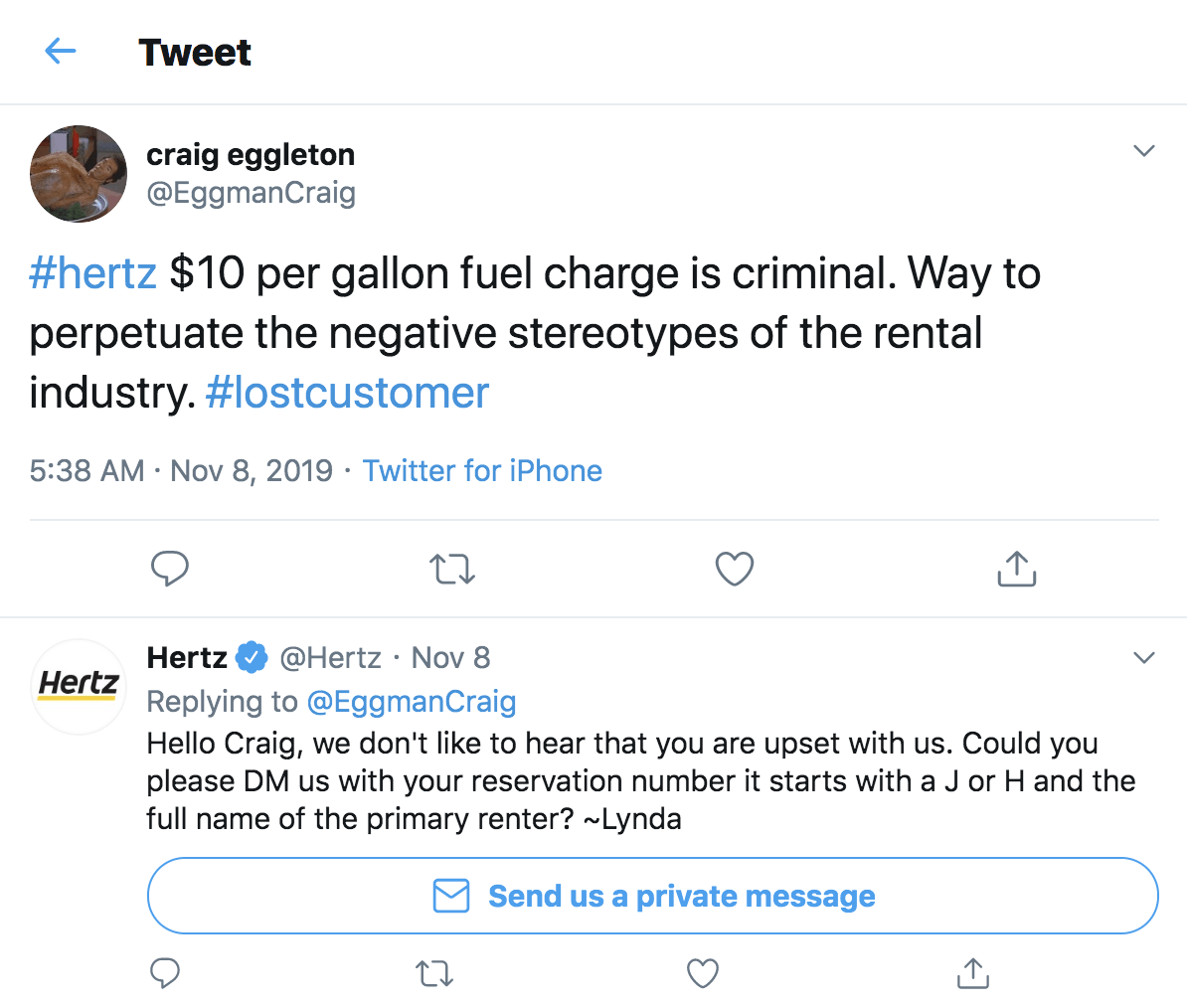
Since incorporating social customer service software into its business, the company has experienced a 30 percent increase in positive engagement with its customers.
Zulily: Referral marketing
Building engagement doesn’t always have to be between your company and your customers.
You can also empower your regular customers to refer your company to their family and friends. Their social circles are full of individuals similar to them who would love to engage with your brand if they get the chance.
Online clothing retail Zulily leverages referral marketing to engage existing customers.
Referrers receive $15 for each person they invite who buys a product. Considering Zulily often lists products at big discounts (70 percent plus), those 15 bucks go a long way.
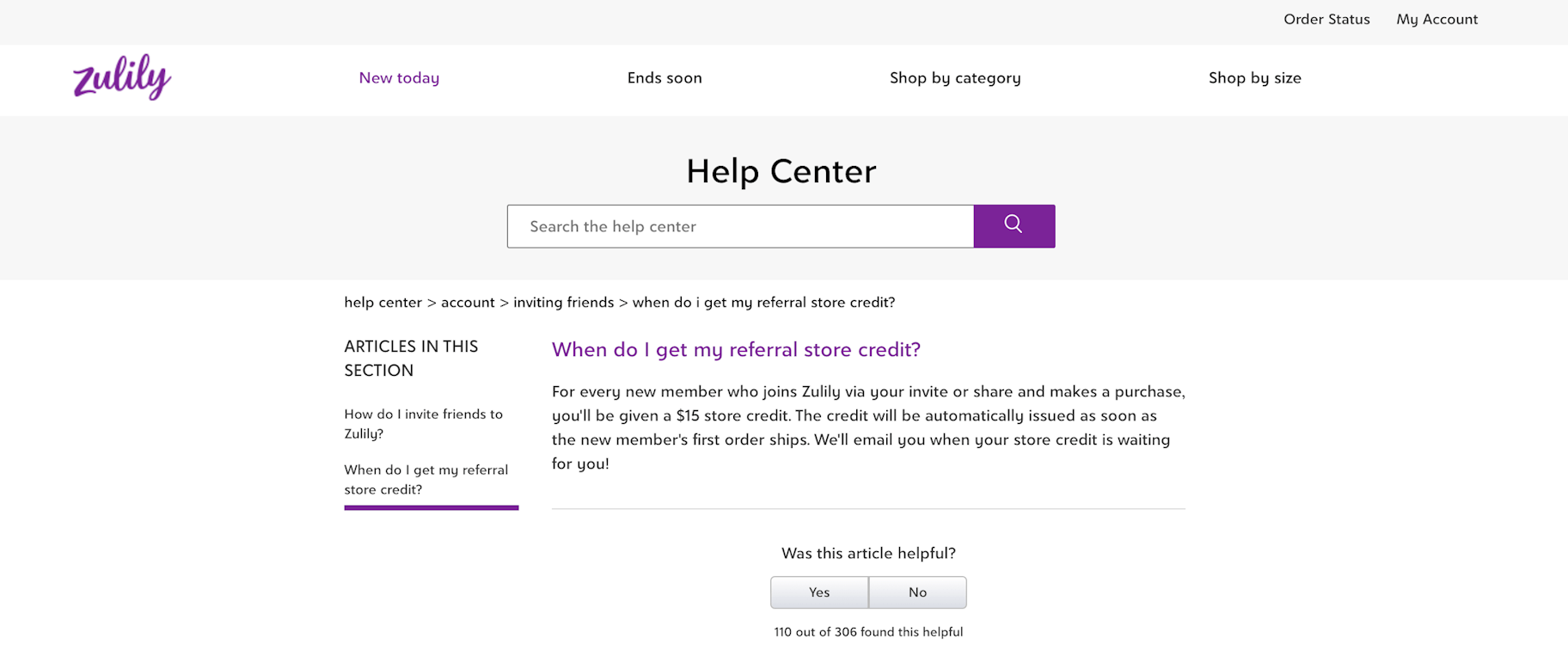
The company even helps referrers by identifying the best people to invite. Referrers can connect their emails and the brand will explore their contacts to determine potential audiences.
It’s this ease and the referral gain that makes customers more likely to engage with the company.
How to Increase Customer Engagement
Customer engagement marketing is an open book with so many pages – but it’s up to you to write the story.
Here are some of the most effective customer engagement strategies. As you read through, do some critical thinking about which ones are best for your unique business and audience.
1. Understand What Delights Your Customers
This should be at the heart of your entire customer engagement plan. Hopefully, you’ve done some research on who your ideal customer is and some of their core traits and behaviors.
If you haven’t, it’s never too late.
The goal is to make sure that your strategy is aligned with what they actually want to see. You can have the best Instagram contest idea ever, but you’ll still fail miserably if none of your customers actually use Instagram or enjoy contests.
To approach this, look at your audience’s psychographics. Psychographics go beyond the basic demographic data like their age, gender, and income. It includes aspects of their personality and how those aspects influence their behavior.
Psychographics include their:
- Opinions
- Interests
- Values
- Needs
- Attitudes
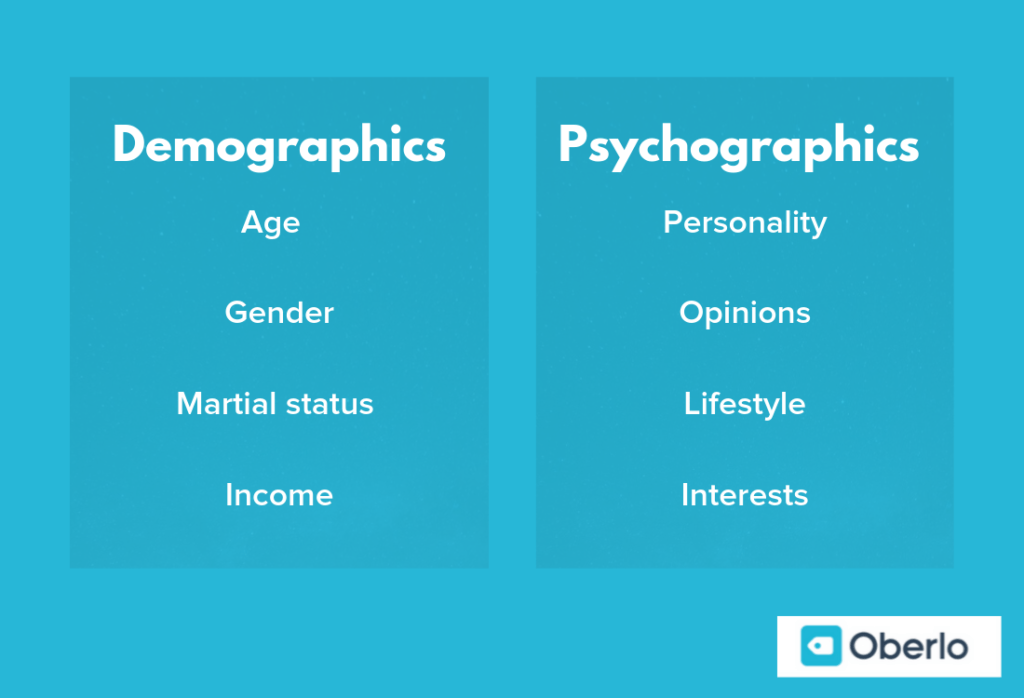
The more you understand what they love, the easier it will be to deliver it to them.
2. Show Some Personality
As we mentioned earlier, being bored is the polar opposite of being engaged.
Many of the world’s most viral brands have distinct personalities that make them feel more like people than businesses.
This is especially helpful if you plan to build customer engagement through social media, where it’s a fierce competition to get a customer’s attention – let alone get them to engage with you.
Humor is a fantastic way to accomplish this.
Netflix has a proven formula for customer engagement through social media. It posts content from the shows it streams, and adds a touch of appeal by adding memes and using the same caption language that’s popular with it millenial and gen Z audiences.

Other brands have found massive engagement from being bold, truthful, and even controversial. Like Nike’s ad with Colin Kaepernick, which was profoundly successful.
Just remember that controversy can kill a business quickly – especially a small business that doesn’t have any clout yet. So be cautious and strategic if you plan to take that route.
3. Create Interesting and Helpful Content
According to one study, Americans spend an average of 24 hours a week online.
It’s almost as if the internet is a part-time job.
And what is everyone doing online? Most of the time, we’re consuming content in some form.
From educational articles and online courses to funny cat videos and social media chats, we’re using web content to constantly learn, communicate, and entertain ourselves.
And when you understand what your customers are looking for online, you can uncover golden customer engagement opportunities.
When Demand Metric asked about brand content, 60 percent of respondents said they enjoy it, 82 percent said that it boosts their perception of a company, and 70 percent said that it builds a stronger emotional connection.
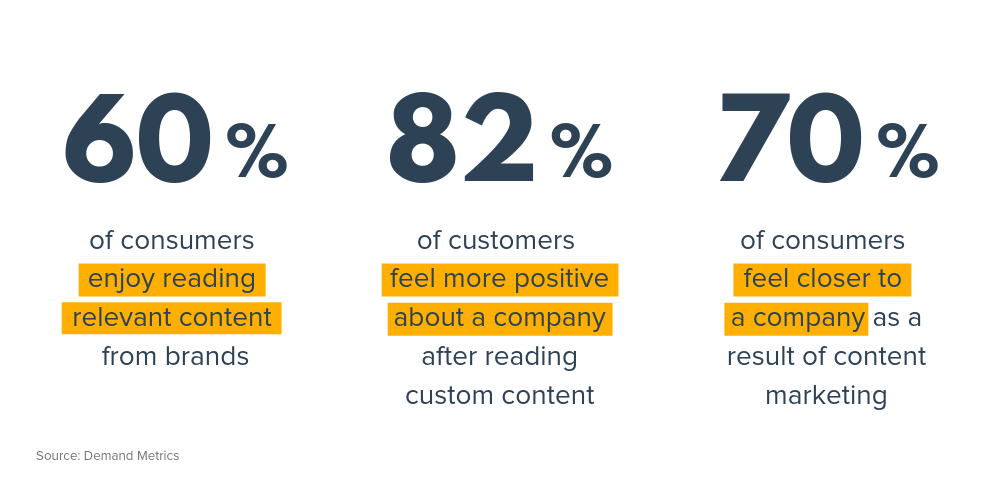
To start, ask yourself questions like: What are my customers interested in? What do they spend their free time on? What are their frustrations and pain points, and how does my business solve them? What do they find relevant and newsworthy in my industry and niche?
Then, you can create interesting and helpful content to address these questions and issues to pique your audience’s interests and gain some credibility.
Here are a few ideas:
- Create a blog for your brand, where you touch on topics related to your offerings and your industry
- Create videos that explain your brand and offerings, as well as cover related topics and entertain your audience
- Develop a social media plan for popular platforms that your customers use, like Instagram, Facebook, YouTube, Twitter, and Snapchat
- Curate relevant content from other entities to ease the burden of creating original content 100 percent of the time
- Create quizzes to test their knowledge and give them helpful advice
4. Have a Two-Way Conversation
In the past, businesses could get away with spouting ads at customers without ever creating meaningful conversations.
In the present, that strategy ain’t cuttin’ it.
To build and nurture the emotional connections we’ve been talking about, it’s critical to give your customers a voice.
At the very least, this starts with responsive and helpful customer service like we mentioned in the examples. Plain and simple: your customers won’t return if they don’t feel like you have their back.
But going beyond this, companies with the highest customer engagement are making an active effort to build dialogue around their brand.
You can cultivate a real conversation by asking for their opinions about existing products or services, or their ideas for new ones. You can also use social media to encourage them to share thoughts, opinions, suggestions, or even jokes.
Like how toilet paper brand Charmin asked its followers to share their favorite potty humor jokes.
In the past, businesses could get away with spouting ads at customers without ever creating meaningful conversations.
In the present, that strategy ain’t cuttin’ it.
To build and nurture the emotional connections we’ve been talking about, it’s critical to give your customers a voice.
At the very least, this starts with responsive and helpful customer service like we mentioned in the examples. Plain and simple: your customers won’t return if they don’t feel like you have their back.
But going beyond this, companies with the highest customer engagement are making an active effort to build dialogue around their brand.
You can cultivate a real conversation by asking for their opinions about existing products or services, or their ideas for new ones. You can also use social media to encourage them to share thoughts, opinions, suggestions, or even jokes.
Like how toilet paper brand Charmin asked its followers to share their favorite potty humor jokes.

Now, let’s look at a few ways to measure customer engagement so you can be sure that you’re always making progress.
How to Measure Customer Engagement
Naturally, the methods you choose for measuring customer engagement will depend on what kind of engagement you’re hoping to get. They’ll also depend on the nature of your business.
Let’s look at a few common ways to measure customer engagement.
You can measure these using analytics tools like Google Analytics, as well as built-in tools on social media accounts like Facebook Analytics and Instagram Insights.
To measure customer engagement, look at metrics like:
- New vs. returning visitors: What percentage of your visitors have come back at least once? The higher your number of returning visitors, the better engaged they’re likely to be.
- Session duration: How much time do customers spend on your website each time they look at it? If they’re on your site for a few minutes or longer, chances are they’re engaged with your content.
- Bounce rate: This measures the percentage of people who leave your website after visiting only one page. Ideally, your bounce rate is low, which shows that people are interested in browsing your site.
- Number of views, likes, and comments: How many people are taking time to interact with your blogs, videos, and social media posts?
In addition to just looking at the totals, you can calculate your engagement rate as a percentage. A three to six percent engagement rate is strong, so aim for that.
To calculate engagement rate for a particular social media post, add up the number of interactions that post got (likes, comments, and shares), divide that number by your total followers, then multiply the resulting number by 100 to make it a percentage.

Let’s walk through an example.
Say your Instagram account has 5,000 followers and you want to measure customer engagement on a post that got 150 likes and 7 comments.
150 + 7 = 157 total interactions
157 / 5,000 total followers = 0.0314
0.0314 x 100 = 3.14 percent
A 3.14 percent customer engagement rate isn’t too shabby!
Remember: Engagement Is an Investment
Depending on the marketing approach you have in place right now, it might seem like you have a long way to go before customer engagement is tightly woven into your business model.
Instead of thinking of it as an uphill battle, think of it as an investment in your company.
All the work you’re putting in now will pay off in the long run.
Just imagine the not-so-distant future when you’ll have an army of loyal customers who would never dare to defect to one of your competitors.
That, friend, is when you’ll know you’ve built a truly awesome brand empire.






